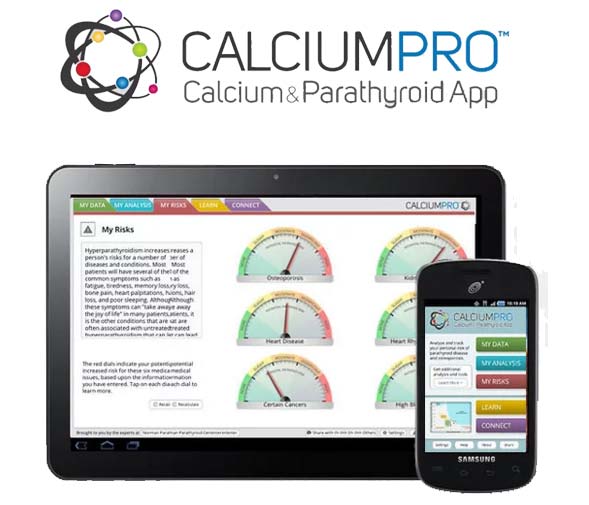Parathyroid Surgery And Recovery

Last week we discussed what it means to have hyperactive parathyroid glands, this week we will discuss what to do about it. When it comes to hyperparathyroidism, parathyroid removal with a surgery is usually the treatment of choice. After that comes parathyroid surgery recovery.
As a brief review to set us up for this week, the word hyperparathyroidism just means an elevated parathyroid hormone (PTH) level. This could be because the parathyroid glands started the problem, by way of a parathyroid tumor or tumors, which is primary hyperparathyroidism. In secondary hyperparathyroidism the problem is that a medical condition has caused a low blood calcium and the parathyroid glands respond by raising the PTH level. If secondary hyperparathyroidism goes on for long enough, the parathyroid glands all enlarge, and just keep cranking out PTH no matter what the calcium level is. This loss of regulation is the hallmark of tertiary hyperparathyroidism.
In cases of primary and tertiary hyperparathyroidism, surgery with the goal of parathyroid removal is the only cure. In secondary hyperparathyroidism medical treatment is usually appropriate, but in some cases surgery with the goal of subtotal parathyroid removal is the right thing to do. Of course if we are going to talk about parathyroid surgery, we need to talk about parathyroid surgery recovery.
Parathyroid Surgery And Recovery
Unfortunately, there are many misconceptions about parathyroid removal that persist because the older versions of this surgery were fraught with problems. So here are some key features of modern parathyroid surgery.
Modern Parathyroid Removal Key Feature #1:
Minimally Invasive
It was 1925 when Dr Mandl undertook the first surgery for parathyroid removal. Doctors at that time were aware the parathyroid glands could be in many different places, but they did not know the chances they would be in any of these spots. In addition the complication rates of neck surgery were very high back then. This combination of high complication rates and modest anatomic understanding shaped the traditional parathyroid surgery technique. The goal was to see as much of the anatomy as possible, in order to find tumors and avoid damaging important structures. So surgeons made very big incisions, cut through muscle and exposed a large area of the neck all at one time. This technique of parathyroid removal, known as a neck “exploration,” persists in some places to this day. Parathyroid surgery recovery after such an exploration meant days in a hospital, weeks before return to normal function and significant post operative pain.
Once surgeons became more familiar with the anatomy of the neck and the chances a parathyroid gland can be in each spot, minimally invasive surgery became an option. For parathyroid removal to be minimally invasive, there are a couple things that implies. First, the incision is small. I get asked all the time how I can find all four parathyroid glands through such a small incision. The best I can explain this is imagine if you have to navigate by an old fashioned paper map (remember those?). If you’ve never been to that city before, and there’s no index, you have to unfold the whole map and look all over the place to find the streets you’re interested in. On the other hand, when you’re looking at a map of the city you’ve lived in for decades, if you see any tiny part of the map, you know exactly where that is, and what it’s close to.
For parathyroid removal we make a small incision in the neck, only needing to see a one inch space to know where we are and what’s close by, and then take advantage of the flexibility of skin to move that little window around to see all the anatomy we need to.
This map familiarity leads to the other key to minimally invasive parathyroid removal, other than the small incision, which is not looking where parathyroid glands can’t be. In the past surgeons weren’t sure where the parathyroid glands could be, and they were looking for tumors, not normal glands, so they looked all over the place, disrupting many areas of the neck. A modern, high volume parathyroid surgeon not only knows where the glands are likely to be, they also know where the glands can’t be, and they don’t go to those areas. If you know the map well, you go right to the streets you’re interested in, you don’t look all over searching through ten streets to find the one you want.
Modern Parathyroid Removal Key feature #2:
The Debate: Four Gland Examination vs Focused Parathyroid Removal
Traditional parathyroid surgery was a romp through the neck, hoping to bump into a tumor. This was a long, painful, complicated surgery for both the patients and the surgeons. In the 1980’s two technologies came together to change everything. Relatively rapid, reliable PTH tests, and improved parathyroid imaging. The focused parathyroid surgery technique was born and boy were surgeons happy about it.
This technique uses imaging to decide where the parathyroid tumor likely is. Then do surgery for parathyroid removal just in the spot indicated on the pre-operative scan. Finally send a PTH level while the patient is still on the table to see if the levels drop. If the PTH comes down, assume the patient is cured and stop operating. If the PTH doesn’t drop, switch to an exploration of the neck for other parathyroid tumors.
This was a significant improvement over the traditional parathyroid removal technique because it limits the scope of the operation. The surgeon just creates a tunnel down to the area of interest on the scan and doesn’t disrupt any other tissue. Parathyroid surgery recovery was much improved with this technique compared to the traditional approach.
This focused parathyroid removal technique has some drawbacks. Sometimes the scans are wrong about where the tumor is located. Sometimes the PTH doesn’t drop when it should or stays high when it shouldn’t. This can lead to a surgeon having to “look around” the neck when they are not used to doing so. Some long term studies have shown that the focused technique’s cure rate decreases over time because some patients have a second parathyroid tumor at the time of their operation that isn’t apparent on scan, and wasn’t looked for during the surgery since the PTH level dropped when the bigger tumor was removed.
For these reasons, some high volume surgeons pioneered the technique of examining parathyroid glands rather than just looking for tumors. If you do enough of these surgeries, you learn where the normal parathyroids can be and can quickly look through the main locations for each individual gland. Each normal gland you find lets you stop looking in any related areas as you move on to the locations for the next gland. This simple change means that one never switches to an old fashioned “exploration” for parathyroid removal. It doesn’t matter if the scan is wrong, and you can never be fooled by incorrect PTH values, you just find the parathyroid glands in the neck, and take out the bad ones.
This minimally invasive four parathyroid gland examination is my favorite technique for parathyroid removal. It is faster than the focused technique because you are not waiting for PTH levels, avoids the mistakes inherent to faulty scan findings and PTH levels and most importantly provides unparalleled experience with finding normal parathyroid glands. If as part of every parathyroid removal surgery you perform, you examine all four parathyroid glands, then this becomes routine for you and you never have to switch from a minimally invasive technique to a more invasive exploration, which can happen to surgeons if the PTH doesn’t drop a case, or if the imaging finding they were chasing turns out to be an error.
Modern Parathyroid Removal Key Feature #3:
Parathyroid confirmation
In a parathyroid removal operation there are three ways to tell if you have parathyroid tissue, and if that tissue is abnormal. Visual inspection, the gamma probe and pathology.
Normal parathyroids are the size of a grain of rice and the color of peanut butter. Adenomas are bigger, usually about one centimeter and up, are dark red and firmer than a normal gland. In the past surgeons usually only found tumors, not normal glands and relied on appearance alone to find these masses. Of course sometimes other structures in the neck can look deceptively like parathyroid glands or tumors, and sometime glands can have subtle abnormal findings.
The gamma probe is essentially a Geiger counter that measures how much of the radioactive tracer is present in a given tissue sample. This radio labeled tracer was administered during a sestamibi scan obtained on the morning of the parathyroid removal. It is highly concentrated in overactive parathyroid tissue and less concentrated in normal parathyroid glands and other tissue types.
In the past pathology in parathyroid removal meant a surgeon took out an entire suspected parathyroid gland and sent it to the pathologist. Biopsies were discouraged because of the risk of killing a normal parathyroid gland. In modern times surgeons have learned about the blood supply of parathyroid glands, normal or otherwise. This allows surgeons to take a small shave biopsy of normal parathyroid glands, avoiding the blood supply.
Each one of these techniques has an error rate; using all three of these techniques together helps minimize the chances of an error during a parathyroid removal.
Modern Parathyroid Removal Key Feature #4:
Low Complication Rate
In the past parathyroid surgery was just a small part of a surgeon’s career. They did not want to do too many of these surgeries in a day. The reason was that the time needed for successful parathyroid removal was very unpredictable, and the reimbursement is not high compared to how much time the surgery could take.
Compounding this problem was the fact that many doctors were either unfamiliar with this disease, or if they knew about it would not refer their patients for parathyroid removal unless the patient was very sick, because they knew about the problems of the traditional approach.
The result was that an individual surgeon did not do many parathyroid removals. To be considered “high volume” in some academic papers, a surgeon only needed to do 20 parathyroid surgeries a year. Would you take your car to a mechanic who only does 20 cars a year?
With the advent of the modern techniques I mentioned above, parathyroid surgery took less time and some surgeons started doing a lot more operations. It soon became clear that surgeons who do more of these surgeries, have fewer complications. This led to some surgeons dropping parathyroid removal from their repertoire, and other surgeons having more cases referred to them.
All that increased volume to certain surgeons meant the complication rates have plummeted over the past two decades.
Modern Parathyroid Removal Key Feature #5:
A Modern Parathyroid Surgery Recovery
I hope by now you can appreciate how far this surgery has come in just a couple generations. In modern times patients are having small incisions, through which the surgeon is limiting their approach and using the knowledge gained from thousands of operations. These elements come together to improve the experience patients have with parathyroid surgery recovery.
The small incision and minimal disruption of tissues minimizes post operative pain. Patients do not need narcotics after surgery and the pain improves rapidly to the point that they can eat right after the surgery, in the recovery room! By the time evening rolls around most patients go to a restaurant and order their favorite dish.
The decreased surgical time means that patients are getting relatively low doses of anesthesia medications, and have less dramatic fluid shifts. This means that people wake up faster, and have fewer problems. For this reason people leave the hospital the same day, rather than staying for observation like the bad old days.
The parathyroid surgery recovery progresses swiftly enough that patients are back to their routine activities the day after surgery. Some people take walks, many get on an airplane, some even play golf. That said, some people are sore and tired, so take a few days off work. Having a surgery on a Thursday, and getting back to work on Monday is pretty common.
Parathyroid surgery recovery progresses quickly for most people and I hope understanding how parathyroid removal has changed over time helps you understand why the experience is so much better now than it was in the past.
Additional Resources:
- Learn more about the Norman Parathyroid Center.
- Read more on the Parathyroid blog.
- Become our patient.
- Check out our sister surgeons at the Clayman Thyroid Center, the Scarless Thyroid Surgery Center and the Carling Adrenal Center. We are now united under one roof, operating at the Hospital for Endocrine Surgery.




